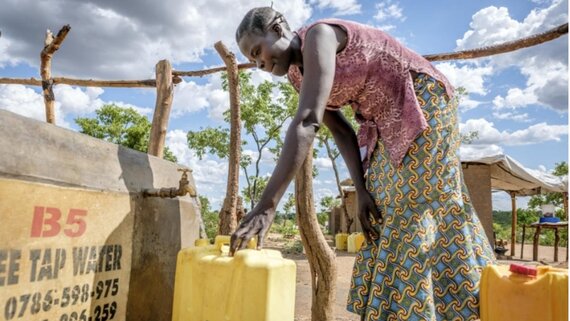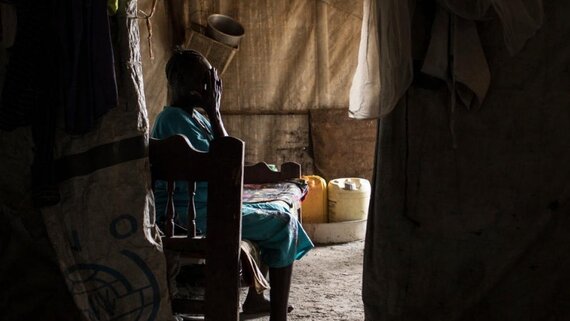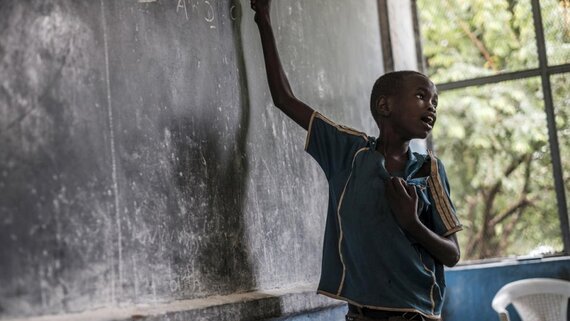Analysis of the context, crisis and needs
2021 marked the tenth anniversary of the independence of South Sudan, and the eighth year of conflict within the country. The security situation, though generally stable, remains fragile in a complex and unpredictable political environment. Peace largely holds at the national level, but subnational violence linked to localized armed conflict and criminality causes death and widespread human rights abuses. Forced displacement numbers are high scale, with 1.7 million IDPs across South Sudan and continued new refugee influxes into DRC, Ethiopia, Kenya, Sudan and Uganda. At the time of writing, this protracted situation remains the largest refugee crisis in Africa, with close to 2.3 million South Sudanese refugees living in the five main neighbouring host countries.
The operational environment remains extremely challenging, with long-standing humanitarian needs compounded by localized violence, severe floods and the COVID-19 pandemic. Growing funding gaps have led to more acute needs, particularly affecting food security, while operational costs have increased due to logistical constraints, such as weak national infrastructure and bureaucratic obstacles. Since the warring parties signed the Revitalized Agreement on the Resolution of the Conflict in the Republic of South Sudan in September 2018, some 300,000 refugees have returned to South Sudan in a self-organized manner from Ethiopia, Kenya, Sudan and Uganda. However, access to essential services remains woefully insufficient, and conditions are not yet conducive to facilitating voluntary repatriation in safety and dignity to South Sudan.

Yumbe, Uganda
A South Sudanese refugee woman collects water at the Bidibidi refugee settlement in northern Uganda’s Yumbe district.
UNHCR/J. OseDespite partial border closures due to the pandemic in 2021, over 130,000 new South Sudanese arrivals have joined refugees from previous waves of forced displacement, in Ethiopia, Sudan and Uganda. Refugees are being generously hosted in countries in the region, but new arrivals have overstretched reception capacities and increased pressures in the main refugee settlements. The increasingly complex regional context due to the COVID-19 pandemic, the outbreak of violence in DRC and Ethiopia, the difficult political and economic situation in Sudan, as well as the stated intention of the Kenyan Government to close its refugee camps by 30 June 2022 pose new challenges for the protection of South Sudanese refugees throughout the region. Launched in October 2020 as a flagship activity of the Intergovernmental Authority on Development (IGAD) Support Platform, and with the support of UNHCR, the Solutions Initiative for Sudan’s and South Sudan’s forcibly displaced is contributing to creating conducive conditions for sustainable and safe voluntary return while preserving protection and asylum space for refugees and returnees, internally displaced persons, and host-community members in the two countries.
Projected situation in 2022 and beyond
In light of current trends, significant numbers of new South Sudanese refugee arrivals are expected in the five asylum countries in 2022. Most South Sudanese refugees are hosted in relatively remote, underdeveloped and economically underserved areas. Host communities often find themselves in a precarious socioeconomic situation, impacted by food insecurity and malnutrition, suffering from limited access to essential services and economic infrastructure, as well as scarce livelihood opportunities. New refugee influxes could further exacerbate the situation for both the refugee and local community populations by increasing competition over limited social services, livelihood opportunities and natural resources, and contributing to social tensions.

Malakal, South Sudan
This woman's husband attempted suicide months after they arrived at the Malakal Protection of Civilians site. He was rescued by a friend, who, worried about his state of mind, lived with him for a month. Another friend lent him money to start a small carpentry business. He stopped drinking and was reconciled with his wife. His suicide attempt is part of a larger crisis across the country. Mental health experts believe the negative effect of South Sudan’s conflict on civilians’ mental health has been staggering. The horrors of the civil war are just one of many contributing factors. Many people feel rootless and struggle to regain their lost identity, which is magnified by depression and anxiety. Men cannot support their families. Childhood ends early and the future is clouded by uncertainty. Home-made alcohol is easily available, which adds to violence and domestic abuse.
UNHCR/Will SwansonFurthermore, the impact of the ongoing COVID-19 pandemic as well as other health crises, malnutrition, natural disasters and severe resource constraints are likely to further exacerbate the already precarious situation and expose South Sudanese refugees to increased protection risks. Due to the loss of income and livelihood opportunities, prolonged school closures, overcrowded shelters, food insecurity, a lack of domestic energy supply and reduced humanitarian assistance, gender-based violence (GBV) incidents could rise even further. Refugee children (65 per cent of the population) face particular risks, including child labour, abduction, early marriage and irregular onward movement through smuggling and trafficking. The situation of thousands of unaccompanied/separated children is particularly concerning, as many suffer harassment, exploitation, neglect and abuse. These challenges generate increased needs for mental health and psychosocial services, strengthened child-protection systems, enhanced community structures, and reinforced GBV prevention and response mechanisms. There is also an urgent need to develop sustainable energy solutions and prevent environmental degradation.
South Sudan RRP: Evolution of needs and requirements
Response priorities in 2022
The 2022 RRP for South Sudan outlines the multi-agency response strategy and financial requirements of 93 partners, including humanitarian and development actors and civil society, supporting host governments to meet the critical needs of over 2.3 million South Sudanese refugees living across the five main asylum countries. In addition, the plan aims to assist over 1.3 million affected members of host communities.
The inter-agency response plan, developed in accordance with the Refugee Coordination Model, takes a comprehensive and solutions-oriented approach. RRP partners will reinforce the response to meet the life-saving needs of South Sudanese refugees while strengthening national protection and resilience mechanisms in asylum countries. Given the need to move beyond emergency assistance to overcome the socioeconomic impact of the pandemic, strengthen the resilience and self-reliance of South Sudanese refugees and support host communities to enhance peaceful coexistence, the 2022 RRP envisages stronger engagement with development and peacebuilding partners. The IGAD Support Platform, with the pledges made by South Sudan and the five asylum countries, will further contribute to an integrated protection and solutions strategy for South Sudanese refugees.

Jewi, Ethiopia
A South Sudanese boy stands at the blackboard at a primary school in Jewi refugee camp, Ethiopia.
UNHCR/Eduardo Soteras JalilIn line with the Global Compact on Refugees, RRP partners plan to advance refugee integration into national systems, such as education, health, environment, livelihoods, child protection and birth registration. A key priority in 2022 will be promoting socioeconomic inclusion and access to livelihoods opportunities for urban and camp-based refugees, and addressing chronic food insecurity, including by increased agropastoral production. RRP partners will prioritize innovative approaches, expand cash-based interventions to increase refugees’ self-reliance, and integrate the refugee response into development plans and initiatives to promote socioeconomic growth. Interventions are also foreseen to ensure sustainable energy and prevent/reverse environmental degradation in refugee settings to the benefit of the larger community.
RRP partners will continue to support national child protection systems, including birth registration, prioritize family reunification and alternative care placement and enhance access to quality education. RRP partners will also intensify measures for the prevention of sexual exploitation and abuse and GBV prevention and response; prioritize support to people with specific needs, including those living with disabilities; consolidate community-based protection mechanisms; and scale up psychosocial and mental health support. Activities to strengthen the empowerment of communities and accountability towards affected populations are core elements of the regional refugee response. The RRP will also facilitate refugees’ participation in peacebuilding initiatives, promoting social cohesion between refugee and host communities and national reconciliation efforts in South Sudan.
Further reading
Source: UNHCR
Source: UNHCR
References
- Intergovernmental Authority on Development (IGAD) Support Platform Press release - December 16, 2019.
- UNHCR Press release - "Joint Statement by IGAD, UNHCR and the governments of South Sudan and Sudan on the Solutions Initiative for 7 million forcibly displaced people", October 5, 2021.
- Refugee Coordination Model - Updated Refugee Coordination Guidance Note.
- Intergovernmental Authority on Development (IGAD) Support Platform Press release - December 16, 2019.
- UNHCR - The Global Compact on Refugees



